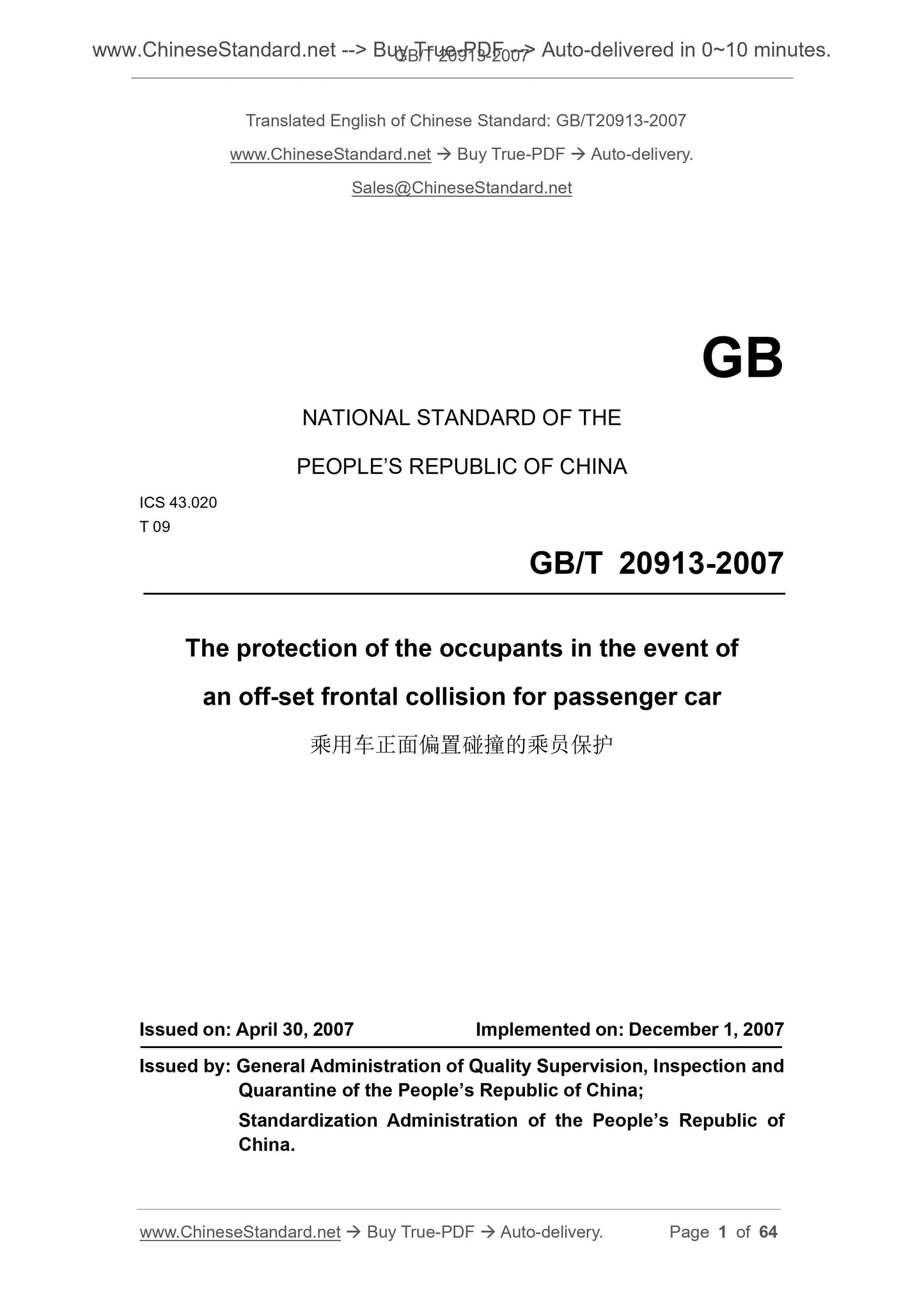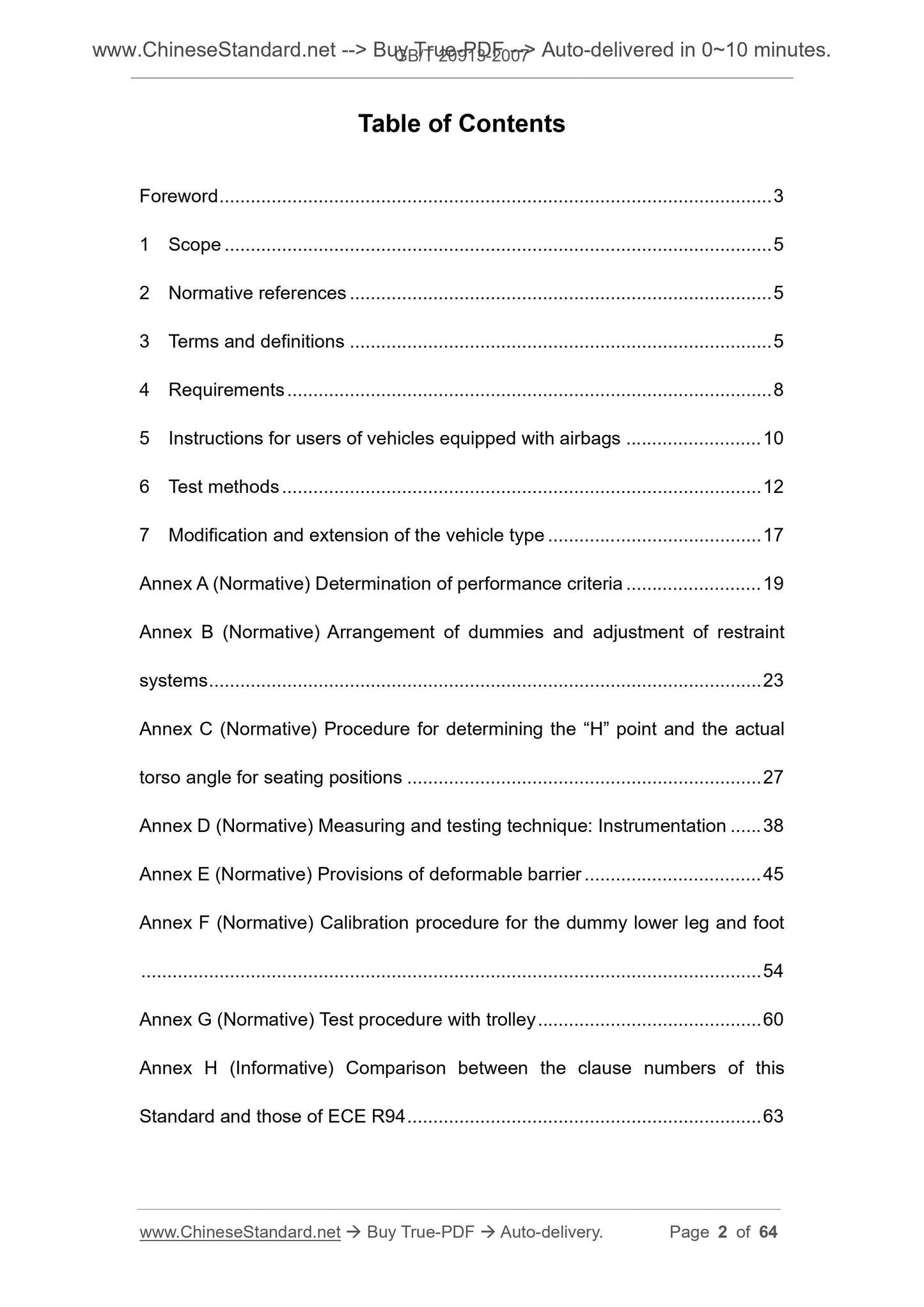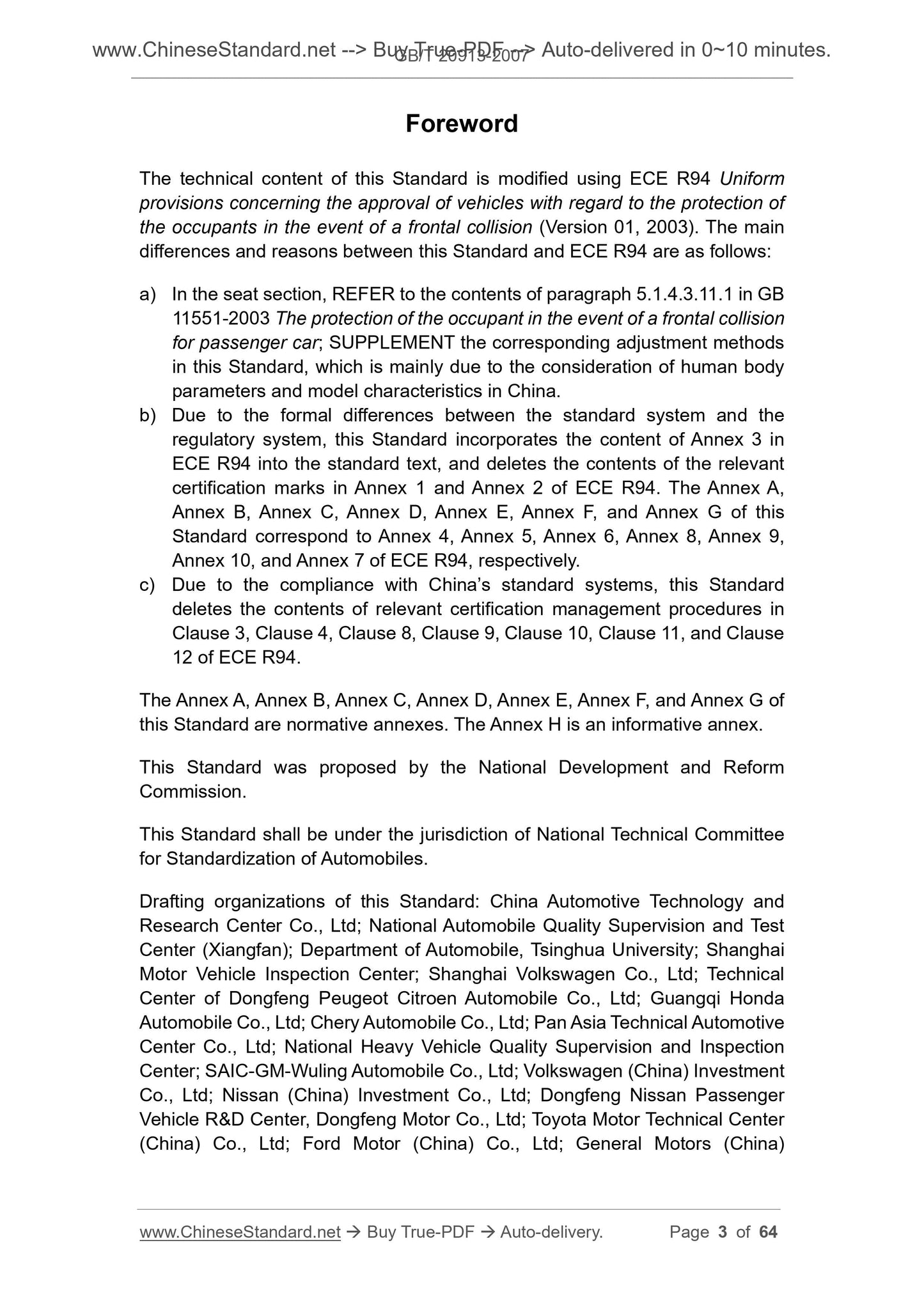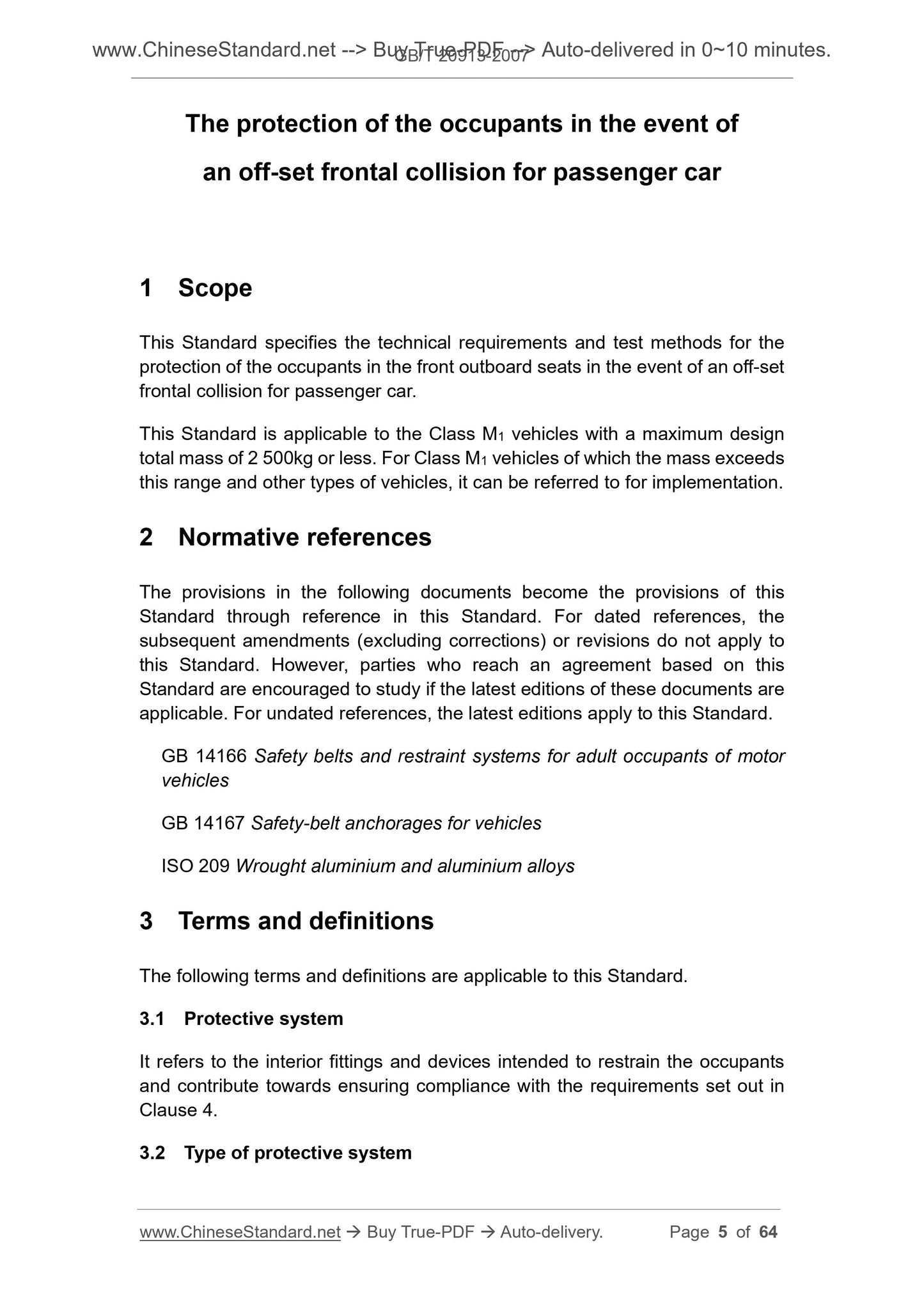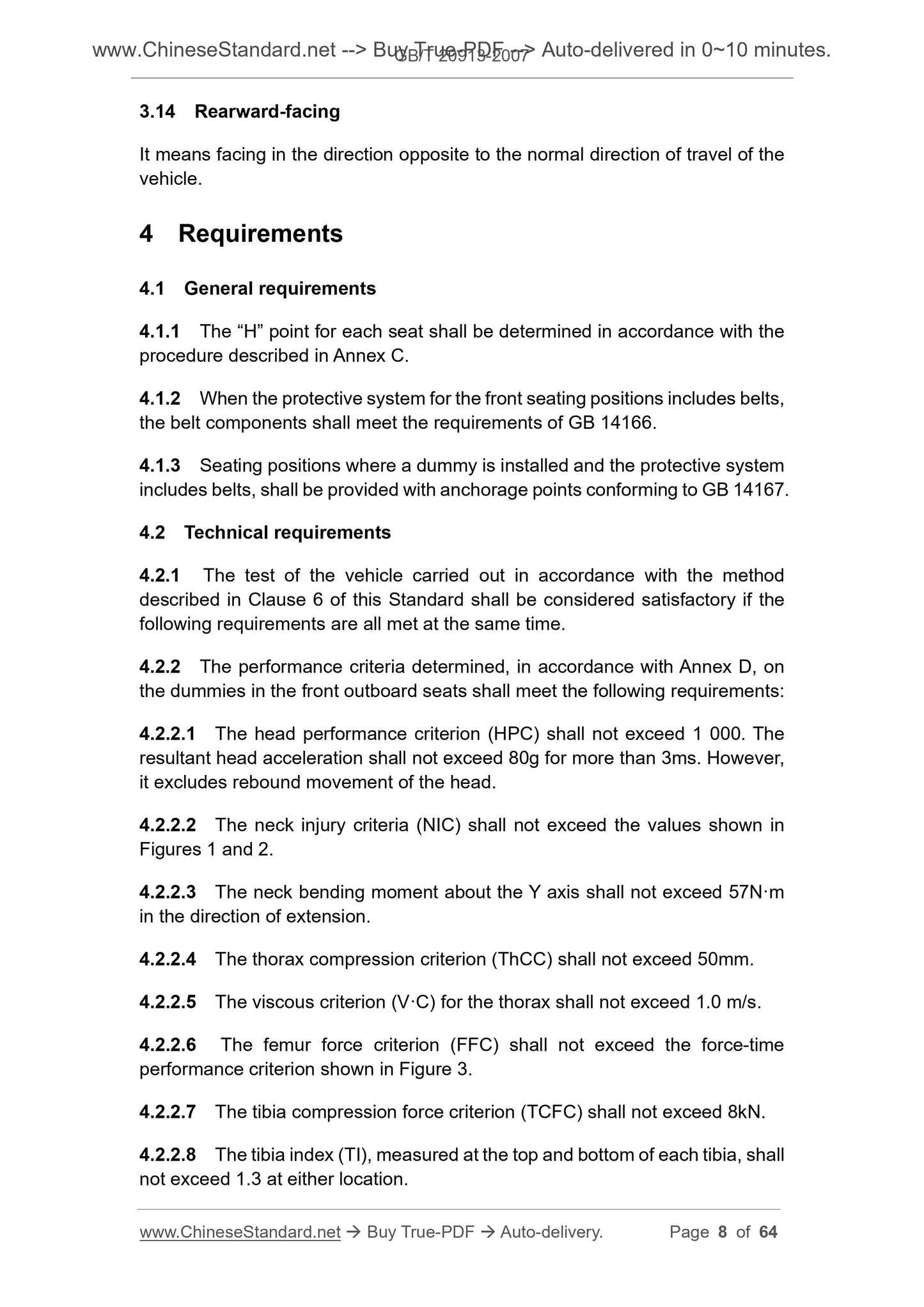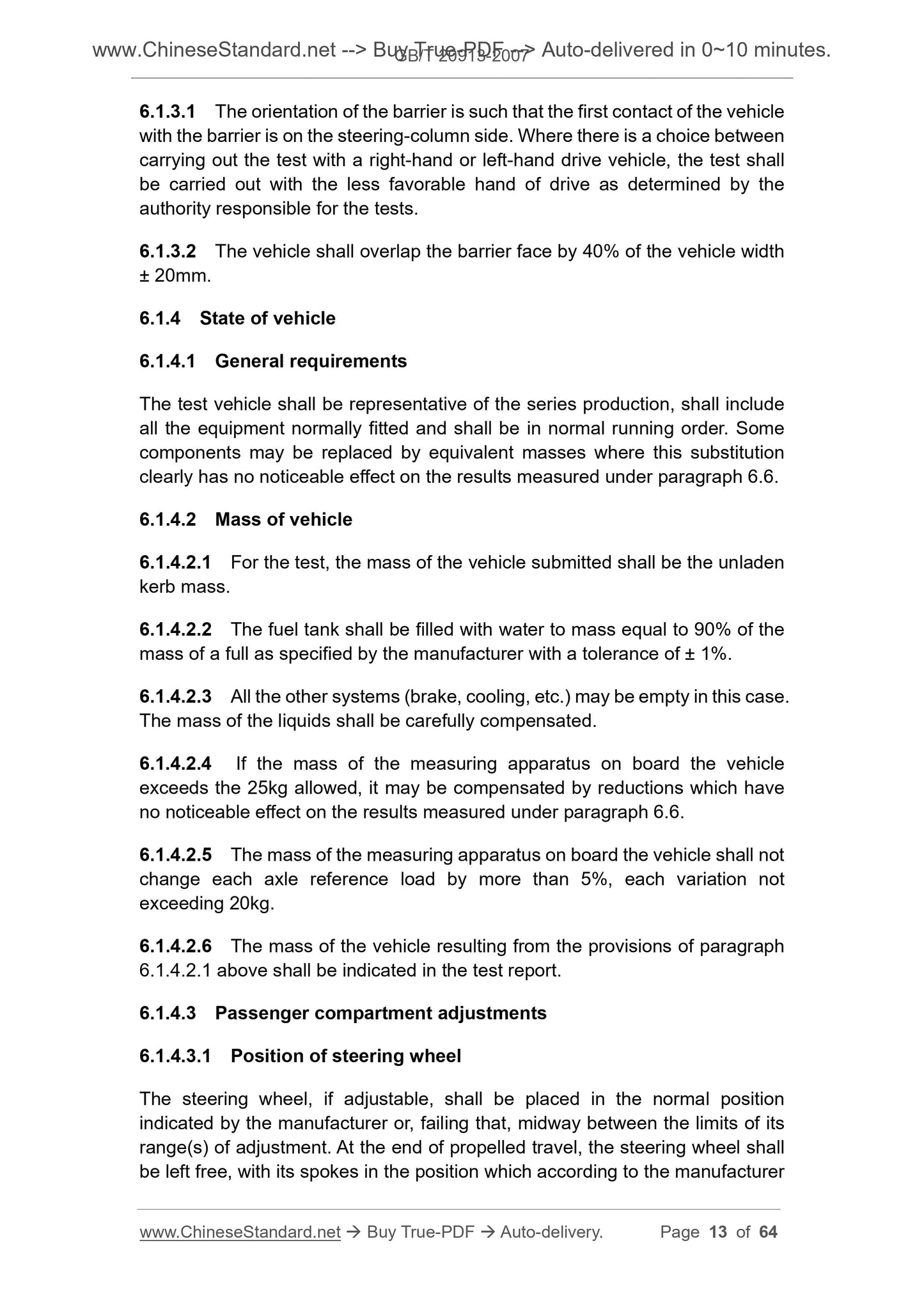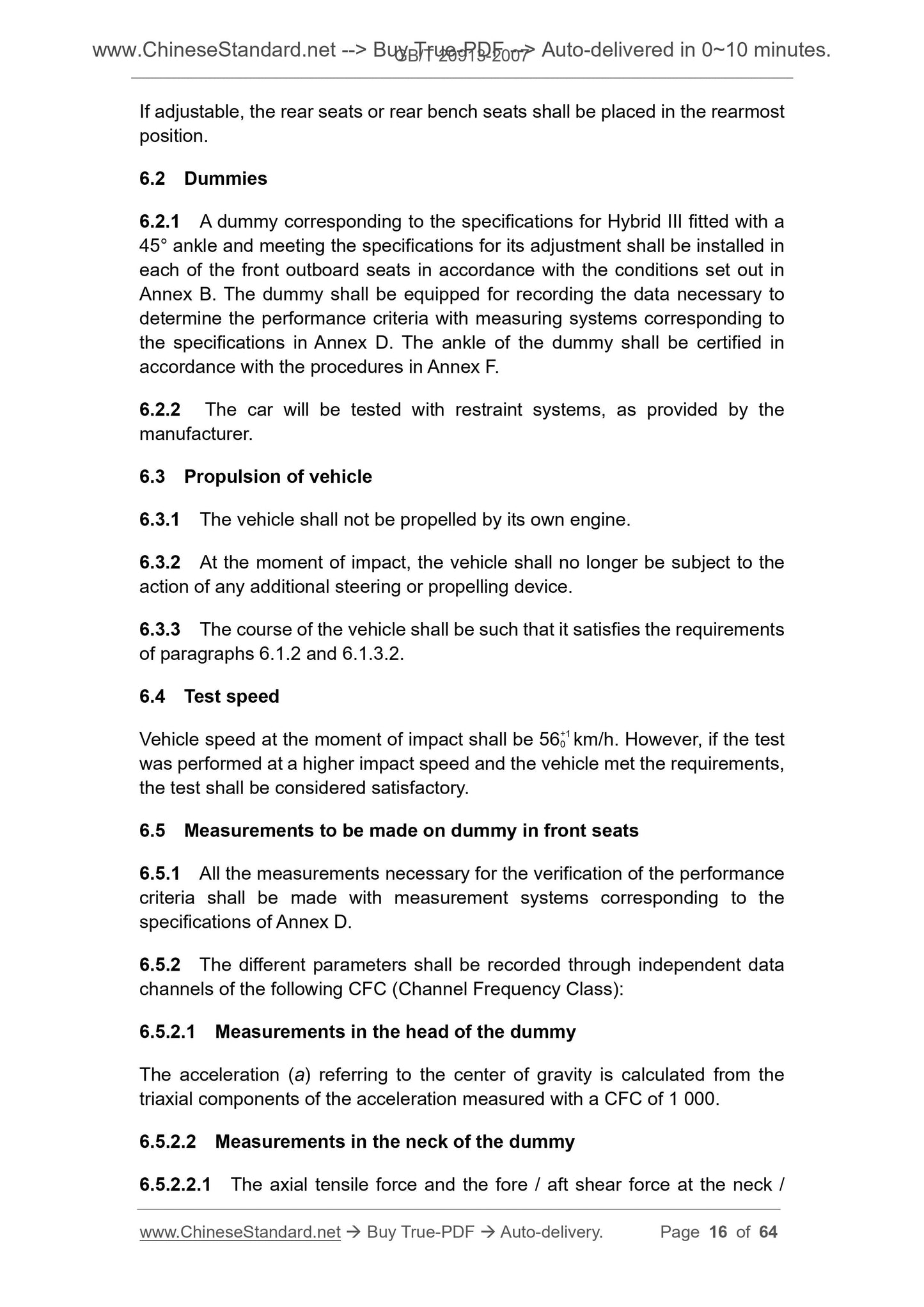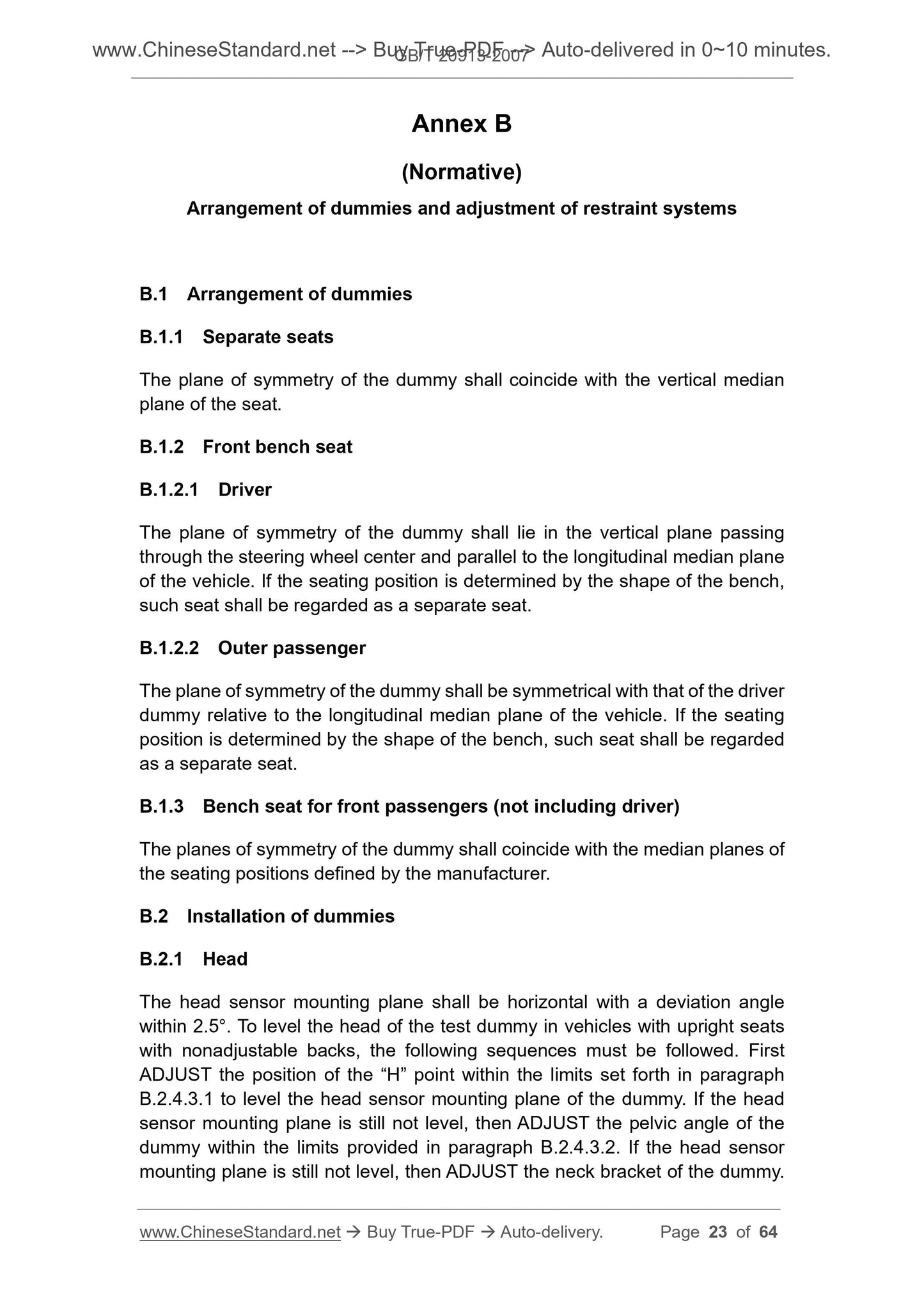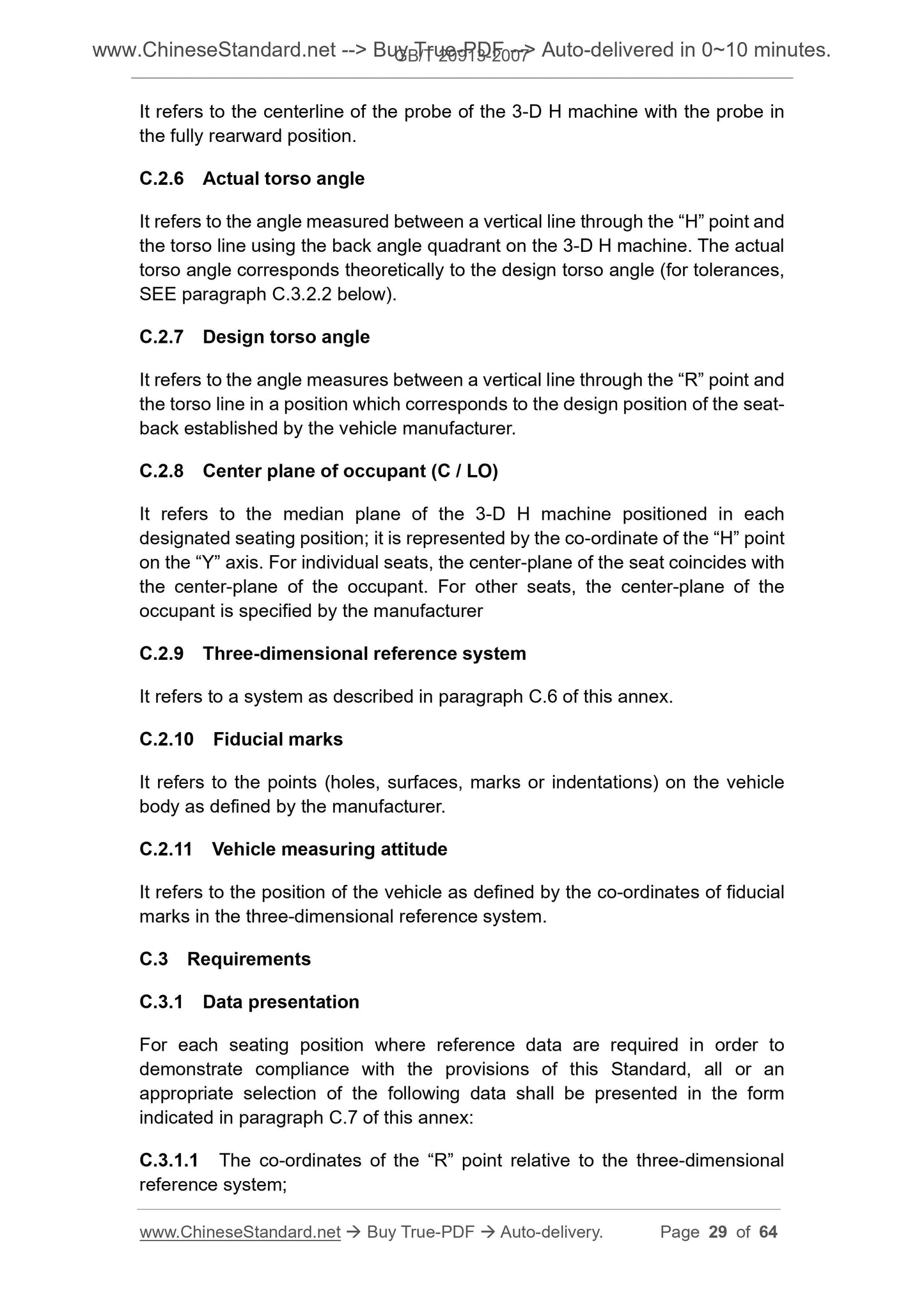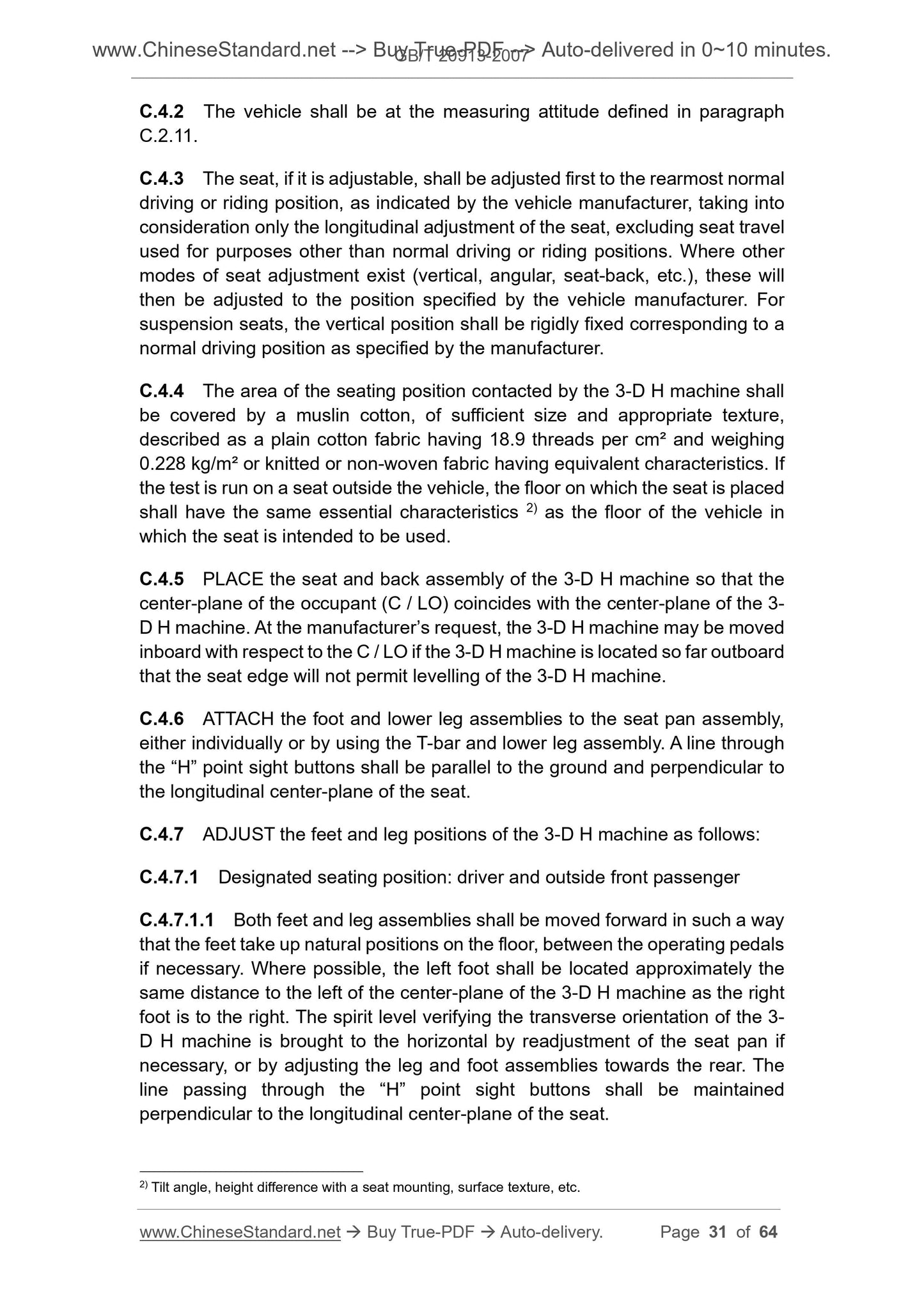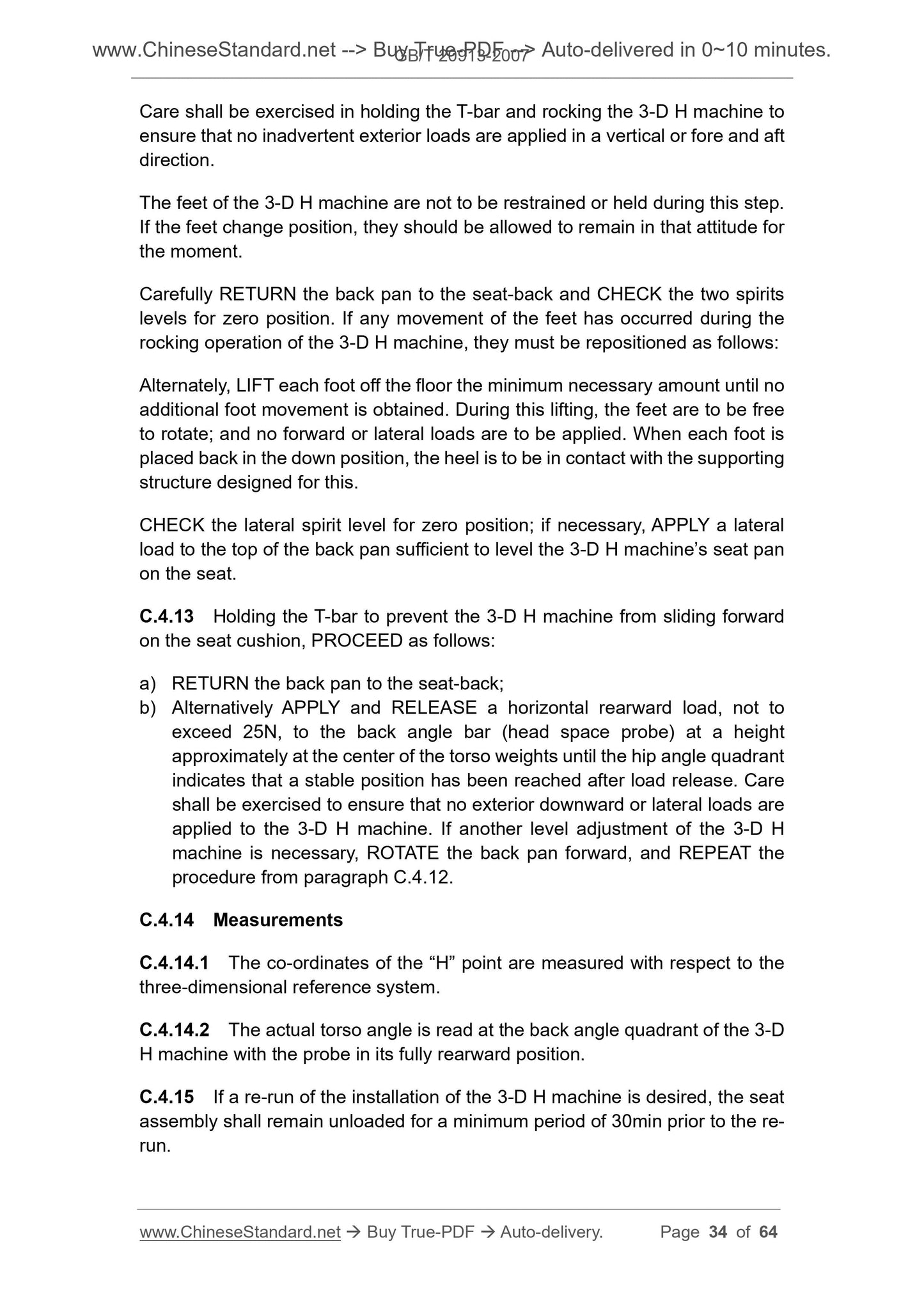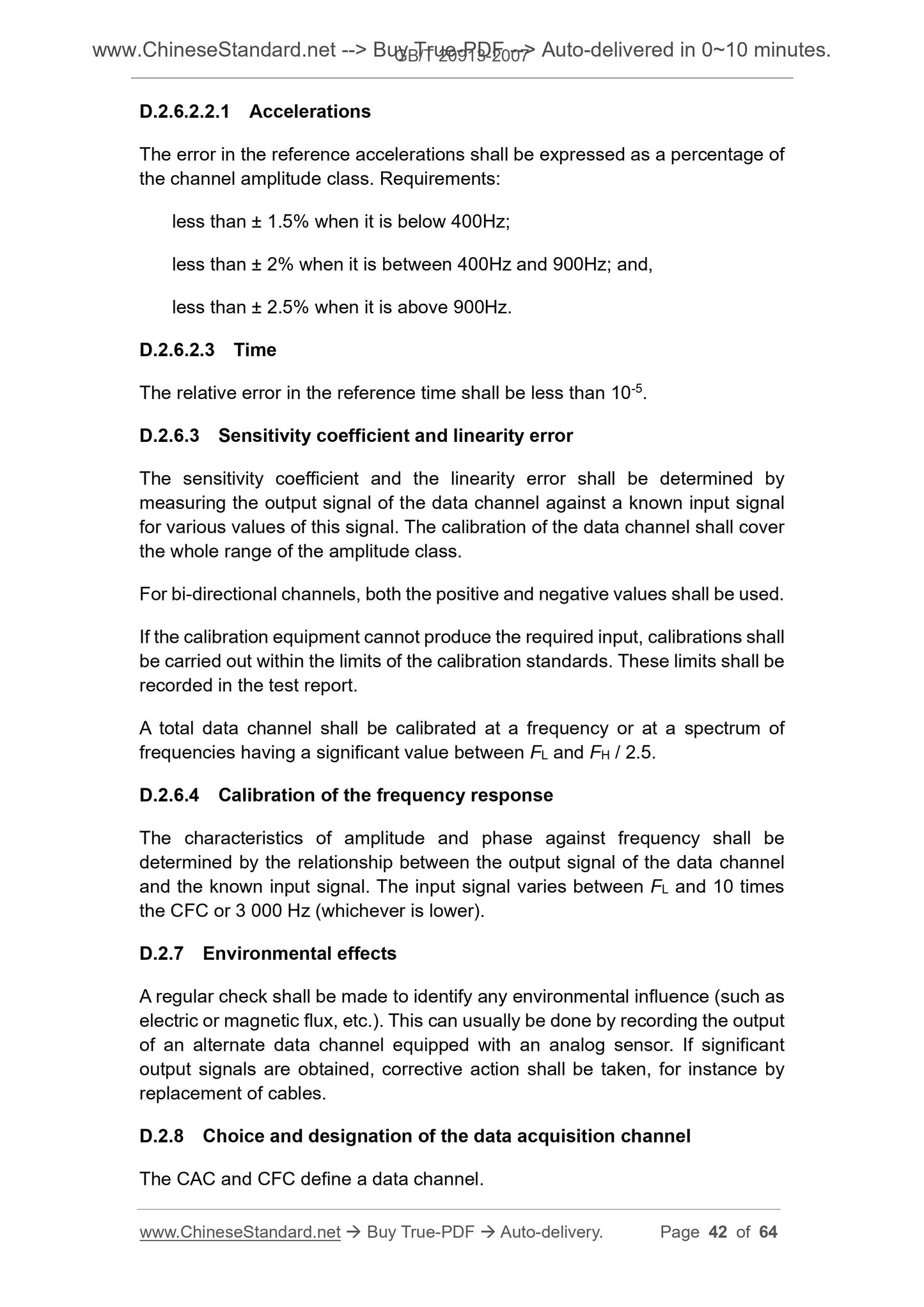1
/
of
12
www.ChineseStandard.us -- Field Test Asia Pte. Ltd.
GB/T 20913-2007 English PDF (GB/T20913-2007)
GB/T 20913-2007 English PDF (GB/T20913-2007)
Regular price
$245.00
Regular price
Sale price
$245.00
Unit price
/
per
Shipping calculated at checkout.
Couldn't load pickup availability
GB/T 20913-2007: The protection of the occupants in the event of an off-set frontal collision for passenger car
Delivery: 9 seconds. Download (and Email) true-PDF + Invoice.Get Quotation: Click GB/T 20913-2007 (Self-service in 1-minute)
Newer / historical versions: GB/T 20913-2007
Preview True-PDF
Scope
This Standard specifies the technical requirements and test methods for theprotection of the occupants in the front outboard seats in the event of an off-set
frontal collision for passenger car.
This Standard is applicable to the Class M1 vehicles with a maximum design
total mass of 2 500kg or less. For Class M1 vehicles of which the mass exceeds
this range and other types of vehicles, it can be referred to for implementation.
Basic Data
| Standard ID | GB/T 20913-2007 (GB/T20913-2007) |
| Description (Translated English) | The protection of the occupants in the event of an off-set frontal collision for passenger car |
| Sector / Industry | National Standard (Recommended) |
| Classification of Chinese Standard | T09 |
| Classification of International Standard | 43.020 |
| Word Count Estimation | 41,482 |
| Date of Issue | 2007-04-30 |
| Date of Implementation | 2007-12-01 |
| Adopted Standard | ECE R94-2001, MOD |
| Regulation (derived from) | National Standard Announcement 2007 No.4 (Total No.104) |
| Issuing agency(ies) | General Administration of Quality Supervision, Inspection and Quarantine of the People's Republic of China, Standardization Administration of the People's Republic of China |
| Summary | This standard specifies the technical requirements and test methods outside of the front seat occupant protection in frontal offset crash when the passenger. This standard applies to the maximum design total mass not greater than 2500kg of m1 class cars. M1 mass exceeding the range of its class cars and other types of vehicles available for implementation. |
Share
